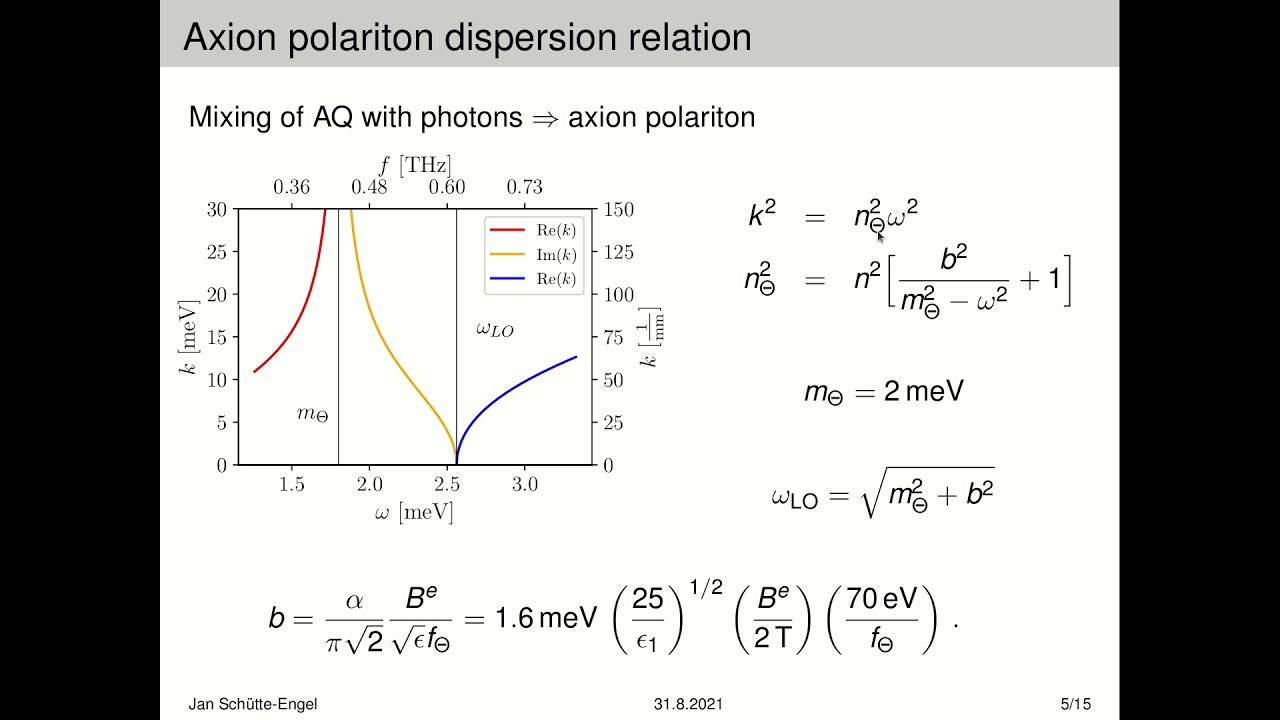Axion quasiparticles are emerging as a key focus in the world of particle physics, providing a promising avenue to explore the enigmatic properties of dark matter. These theoretical entities, predicted as a solution to the mysteries surrounding the universe’s makeup, are now being investigated through innovative experimentation. A recent breakthrough has showcased how axions could be detected by leveraging quasiparticles, specifically utilizing materials like manganese bismuth telluride, renowned for their unique quantum characteristics. As researchers continue to unravel the complexities of axion quasiparticles, the potential for advancements in quasiparticle detection and new quantum technologies becomes increasingly tangible. This pivotal research not only aims to shed light on the elusive dark matter but also navigates the exciting frontier of quantum materials, intertwining the realms of theoretical physics and practical application.
In the study of fundamental physics, the exploration of hypothetical particles known as axions has gained significant traction, particularly as leading candidates for dark matter. These elusive entities, which remain undetected, could provide essential insights into the universe’s structure and origins. Recent studies have introduced the concept of axion quasiparticles, crafted through sophisticated experiments that utilize advanced quantum materials such as manganese bismuth telluride. By examining these quasiparticles, scientists hope to uncover vital interactions that hint at the presence of dark matter, thus bridging the gap between abstract theoretical models and observable phenomena. As the momentum in axion research accelerates, exciting possibilities unfold for enhanced quasiparticle detection strategies and the advancement of particle physics.
Understanding Axions as Dark Matter Candidates
Axions are hypothetical particles posited to solve some of the most intricate puzzles within particle physics, particularly in relation to dark matter. These elusive particles are theorized to constitute a significant portion of dark matter, which is believed to account for approximately 85% of the universe’s mass. By investigating axions, researchers aim to elucidate their properties and enhance our understanding of the cosmos, potentially leading to revolutionary breakthroughs in physics and cosmology. As scientists delve deeper into the nature of dark matter, the existence of axions presents a promising avenue for uncovering the hidden layers of our universe.
Recent advances in the detection of axions, such as those associated with axion quasiparticles, open new possibilities for experimental verification. The pursuit of these particles is becoming increasingly vital in the quest to solve the mystery surrounding dark matter, as more researchers recognize the potential significance of axions in the broader physical landscape. By fostering collaborations between fields like condensed matter physics, high-energy physics, and material science, scientists are positioning themselves to uncover the foundational truths about dark matter.
Frequently Asked Questions
What are axion quasiparticles and their significance in dark matter research?
Axion quasiparticles are quasi-particles that simulate axion particles, which are hypothesized as dark matter candidates in particle physics. Their significance lies in their ability to act as detectors for actual axions, providing a new experimental avenue to confirm the existence of dark matter, crucial for understanding the universe’s composition.
How do axion quasiparticles relate to particle physics and dark matter detection?
In the realm of particle physics, axion quasiparticles are essential for exploring the properties of dark matter. They interact with dark matter axions, and by detecting the resulting excitation in materials like manganese bismuth telluride, researchers can potentially uncover dark matter signals that have previously evaded detection efforts.
What role does manganese bismuth telluride play in the study of axion quasiparticles?
Manganese bismuth telluride serves as a unique material platform for cultivating axion quasiparticles. Its distinct electronic and magnetic properties enhance the interaction between axion quasiparticles and dark matter, making it a pivotal component in experiments aimed at detecting axions and studying dark matter in a controlled setting.
How might axion quasiparticles contribute to advancements in quantum materials?
Axion quasiparticles can lead to significant advancements in quantum materials by demonstrating new forms of light-matter interaction, such as axion polaritons. This could result in innovative optical applications and further insights into the fundamental principles of condensed matter physics, paving the way for new quantum technologies.
What experimental techniques were used to study axion quasiparticles in this research?
The researchers employed sophisticated techniques including ultrafast laser optics and precise nano-fabrication methods to create a 2D crystal structure of manganese bismuth telluride. These tools enabled them to observe the dynamic behavior of axion quasiparticles and validate longstanding theoretical concepts.
What is the future outlook for axion quasiparticles and their role in dark matter studies?
The future outlook for axion quasiparticles is promising, with ongoing efforts to refine experimental conditions and explore their properties further. Researchers aim to conduct experiments that directly probe axion dark matter, potentially transforming our understanding of dark matter and contributing significantly to the particle physics community.
Can you explain the concept of axion quasiparticles as a ‘cosmic car radio’?
The idea of axion quasiparticles as a ‘cosmic car radio’ refers to their potential ability to detect specific frequencies emitted by axions, akin to tuning in to radio signals. This analogy underscores the hopeful approach of researchers to capture elusive dark matter signals by honing in on the expected resonant frequencies of axion interactions.
Why are axions considered a leading candidate for dark matter?
Axions are regarded as a leading candidate for dark matter due to their theoretical properties that align with missing mass observations in the universe. They possess characteristics that can explain the gravitational effects attributed to dark matter, offering a coherent model that fits within the framework of particle physics.
What insights could the detection of axion quasiparticles provide about the universe’s history?
Detecting axion quasiparticles could reveal crucial information about the composition and evolution of the universe. By confirming the existence of axions as a component of dark matter, researchers could gain deeper insights into cosmic phenomena, including galaxy formation and the large-scale structure of the universe.
How does this research on axion quasiparticles impact the future of particle physics?
This research marks a significant step in particle physics as it bridges the gap between theoretical predictions and experimental validation regarding dark matter. The ability to experimentally observe axion quasiparticles paves the way for new technologies and deeper investigations into fundamental physics, enhancing the understanding of both cosmology and particle interactions.
| Key Concept | Details |
|---|---|
| Axion Quasiparticles | Simulated particles that could act as detectors for dark matter. |
| Significance of Axions | Axions are a leading candidate for dark matter and could solve major questions in particle physics. |
| Recent Experiment | Researchers confirmed the potential existence of axions using manganese bismuth telluride. |
| Innovative Techniques | Utilized ultrafast laser optics and precise nano-fabrication methods to examine quasiparticle dynamics. |
| Potential Applications | Axion quasiparticles may enable advancements in quantum technologies and dark matter detection. |
| Future Research | The aim is to track axion dark matter to further solidify findings and expand the understanding of the universe. |
Summary
Axion quasiparticles are gaining attention as they could unlock the mysteries surrounding dark matter. Recent research highlights the importance of these quasiparticles in testing theoretical predictions of particle physics and their potential as advanced detectors for dark matter. With new experimental techniques and materials, scientists are closer than ever to confirming the existence of axions, which play a pivotal role in understanding the universe’s composition. The continued exploration of axion quasiparticles not only furthers scientific knowledge but also opens up possibilities for innovative technologies.



